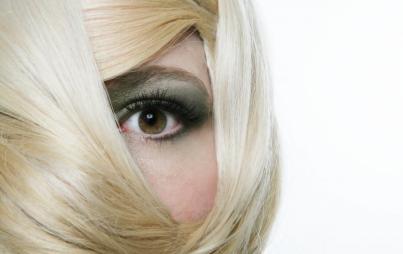
I am going to wear all of my colors proudly.
I found my first gray hair on my 27th birthday. I was working at a dot-com at the time, freshly married, just out of business school, and still slightly wet behind the ears in at least a few ways. I didn't freak out when I saw it—I'm not a freaker by nature—but I did yank it out.
Not too many years later I was enmeshed in the "dye cycle," that weekly jaunt to the stylist to hide the tinsel and touch up the rest of the follicular color palate. And to drop about $150. And to continually wonder what water temperature and shampoo type would have the least chance of ruining your stylist's good work. And, once you've returned home, to hear your spouse remind you that his haircuts only cost $32. And to not be sure, a week later, that you've chosen the "right" color.
Year after year, this routine continues for every woman who chooses to keep her grayness under her hat, a perpetual commitment of both time and dime.
"Enough," I said recently to my raven reflection in the mirror. The next time I walk into my South Florida salon, I committed, I will advise my stylist that we are going to begin the process of returning my hair to its natural hue, which used to be chestnut and is now a unique mashup of brownish tones mixed with lots of lovely silver. How will this turn out? I have no idea. What will my business associates think? Not a clue. Do I care? Not one little flippin' bit. My reflection was slightly agog at this particular decision, but she ultimately made her way to my line of thinking, and by the end of our little dialogue, was nodding to me enthusiastically.
This is my hair. Mine. My highs, lows, joys, and agonies all interwoven into the colors that surround and insulate me. My hair is partially gray. This is a fact—not one to be frightened by, like an illness, but just a simple fact. It's a color. And I am going to wear all of my colors proudly.
In some cultures, rather than representing weakness of the body or the mind, gray hair symbolizes wisdom. Medicine men, seers, and even witches are consistently conjured with silver locks in stories and works of literature across the world. The sorceress, the queen, the enchantress—they all walk through the forests of popular lore trailing a gorgeous flowing mane of white. They have no soft sentimentality for brown or blonde or red—white is pure brilliance, a faithful and shimmering reflection of the sage within. The enchantress is there, my friends. She waits patiently under layers of numbered dyes to to let fly her fabulousness. We need only let her.
My enchantress is now free. She plays discreetly among the highlights and lowlights planted strategically within my long hair, there to support her in good fashion as she makes her way down my back and into the world. She has been officially welcomed by me physically, and been given room to grow. And now, I continue the infinitely harder task of embracing her within.
This story originally appeared at The Torrid Forties blog.







